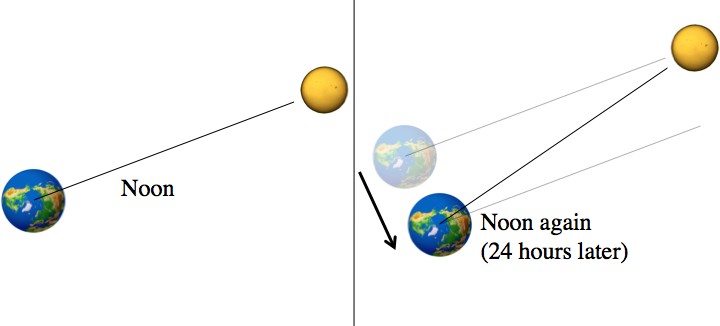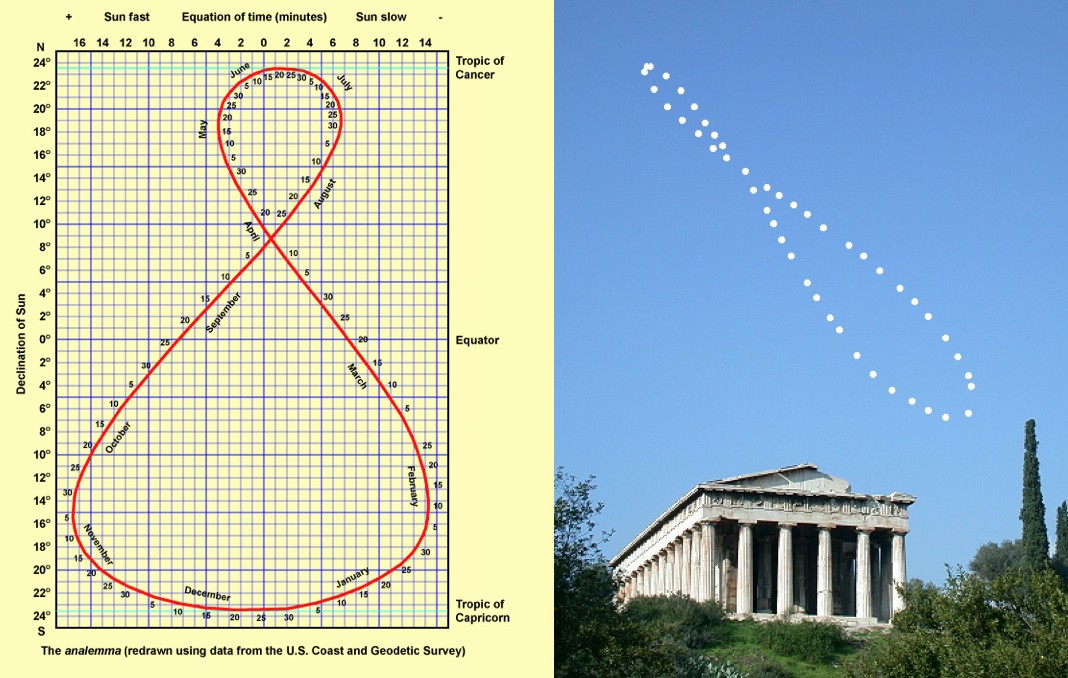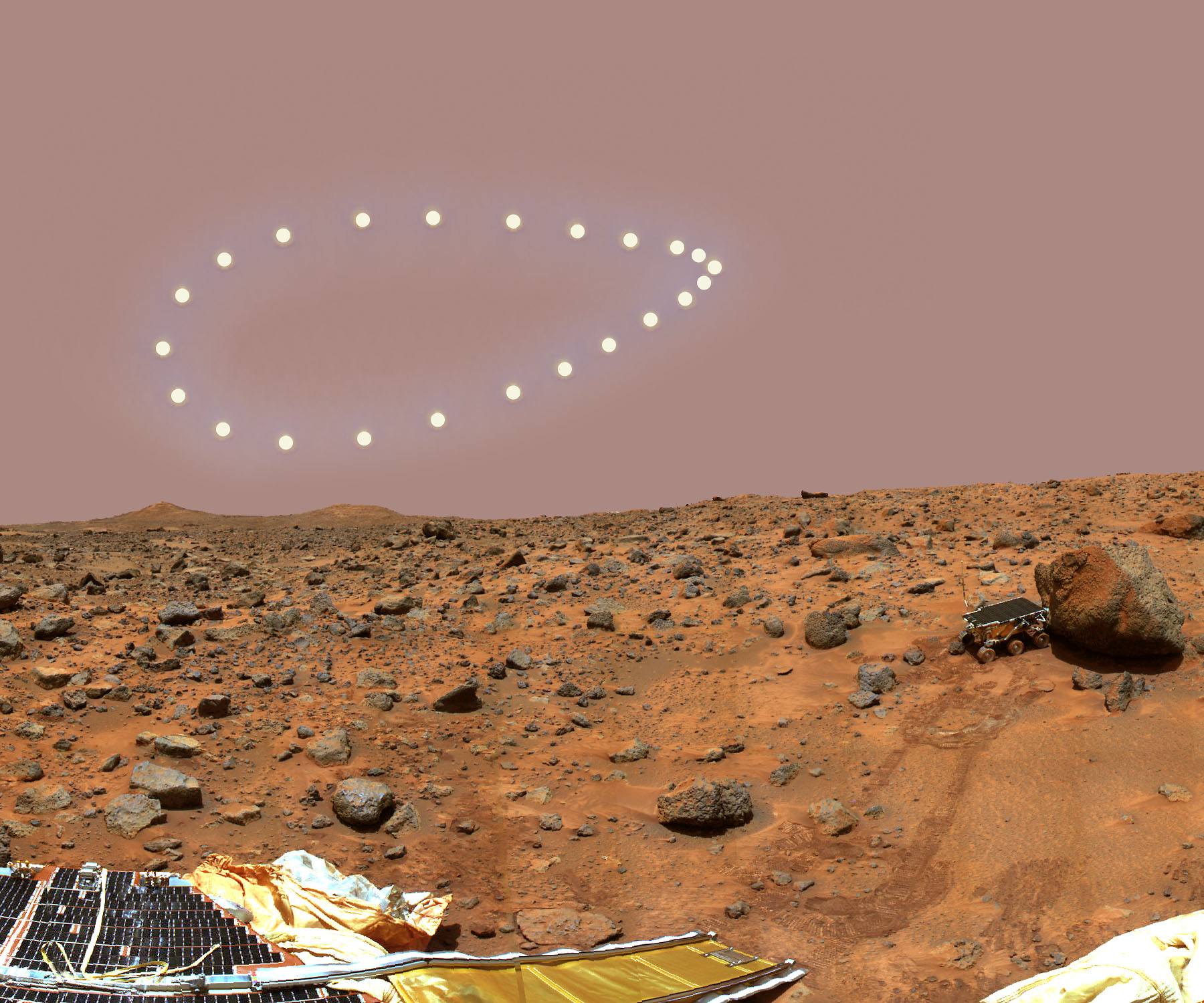The original question was: Hopefully you can help me to explain this mystery. I live in the northern hemisphere, in the U.S. I notice that winter solstice is the day with the shortest period of sunlight BUT it is not the day when the sun sets earliest. That day is around December 10th. So, the sun is already starting to set later every day even though we’re not yet at the winter solstice. Of course, the sun is rising more later to more than make up for the later sunsets so the days are still getting shorter for the next 8 or 9 days. I tell my friends that the sun is already starting to set later but they don’t typically believe this even though I’ve verified it on several web sites that compute sunrise/sunset.
My question is why isn’t the shortest day of the year also the day with the earliest sunset? There’s some asymmetry somewhere!
Physicist: “Asymmetry” is the perfect way to say it.
As the Earth moves around the Sun it needs to turn slightly more than 360 degrees to bring the Sun to the same place in the sky, because during the course of that day the Earth has also moved about 1 degree in it’s orbit (360 degrees over 365 days), which puts the Sun about 1 degree away from where it “should” be.

24 hours is not the time that it takes for the Earth to turn once (that’s 23 hours and 56 minutes). 24 hours is the average time it takes for the Sun to get back to the same place in the sky. As seen from above the north pole, the Earth both turns on its axis and orbits the Sun counter-clockwise.
This discrepancy is the source of the difference between “standard” and “sidereal” days (the time it takes Earth to physically rotate exactly once).
The standard 24 hour day isn’t quite the time from noon to noon (solar day). It’s actually the average noon-to-noon time (averaged over the year). That average time is set in stone, and it’s the time your watch reads. After all, with most clocks today accurate to within a couple minutes a year, it’s easier to not set your clocks by the Sun, and just let them run.
However, because the Earth’s orbit is elliptical, the angle we cover every day in our orbit changes. When we’re farther, the angle doesn’t change as fast, and the solar time gets a little ahead of standard time. When we’re closer, the angle changes faster and the solar time falls a little behind standard time.

When we’re farther from the Sun the angle we sweep out is smaller, and the Sun falls behind our clocks (this is cumulative), so it rises and sets behind schedule. When we’re closer, the opposite occurs.
It so happens that the closest we get to the Sun corresponds with the Winter solstice (in the north), but not exactly. The “perihelion” falls around January 4th, and the solstice falls around December 21st.
Solar time falls behind more and more between November and February (losing the most time on Jan. 4) thus pushing the sunset later. The length of the day gets shorter up until Dec. 21 (pushing the sunset earlier). The strength of these effects just happens to balance around December 10th (give or take), before that the length of the day is more important, and afterward the standard/solar time discrepancy is more important.

You don’t have to trust me. Set up a camera (anywhere on Earth) and take pictures of the sky at the same time everyday. The image on the right was made by a guy who did exactly that (http://www.perseus.gr/Astro-Solar-Analemma.htm).
The effect is pretty small, so in general the length of the day is the only thing you’d need to worry about (solar time never gets more than 15 minutes away from standard time). When standard time became standard, sundial makers started putting an analemma (the picture above) on their sundials so people could correct for the difference.
Anyway, tell your friends you’re right!
Mostly unrelated tangent!: The seasons and the length of the day are caused by the tilt of the Earth’s axis. The fact that the north points away from the Sun at about the same time that the Earth is closest to the Sun is a coincidence. This leads to slightly less extreme seasons in the northern hemisphere. When the axis tilts away in the north at the same time that the Earth is farthest from the Sun, the seasons in the north are slightly more extreme. This leads to more snow cover. And since the north has more land (where snow cover happens) more sunlight is reflected back into space (snow is white), which cools the planet more, which helps lead to ice ages.
Also, the Earth’s axis “wobbles” in a circle over the course of about 26 thousand years. So, for example, in about 13 thousand years, the north will point away from the sun when the Earth is farthest away. As a result, glacial periods have cycles of around 26 thousand years (or multiples). Also as a result, the North Star has not been, and will not be, the North Star for long. So soak it up. Ancient Egyptians had to average between two stars, like savages.
Also!: The exact shape of the analema is a function of the tilt of the axis, the timing of the solstices and equinoxes, the eccentricity (“ellipticalness”) of the orbit, and the timing of the closest and farthest points in the orbit. As such, the other planets each have their own analemas. We can easily calculate what those should look like, but, with the exception of Mars, it’s unlikely we’ll be able to photograph them any time soon. You can’t land a probe on the gas giants, you can’t see the sky on Venus, and stuff of Mercury tends to melt.








17 Responses to Q: Why isn’t the shortest day of the year also the day with the earliest sunset?